Blepharoplasty vs. ptosis Repair is a topic that has long been discussed in the field of ophthalmology. Blepharoplasty is a surgical procedure to improve the appearance of the eyelids. It involves removing excess fat, skin, and muscle from the upper and lower eyelids. Ptosis Repair, on the other hand, is a procedure to improve the appearance and function of the eyelids by correcting a droopy upper eyelid
When considering blepharoplasty vs ptosis Repair, it is important to understand the differences between the two procedures. Blepharoplasty is primarily for aesthetic purposes, while ptosis Repair is intended to improve the function of the eyelid. Blepharoplasty can also be used to reduce puffiness and dark circles under the eyes, as well as to improve the appearance of wrinkles and sagging skin around the eyes. Ptosis Repair, however, is used to correct the drooping of the upper eyelid, which can cause vision problems and can be uncomfortable.
[ez-toc]
what is ptosis
What is ptosis? It is a medical condition involving the drooping of the upper eyelid. Ptosis can be caused by a number of different factors, including age, trauma, and neurological disorders. Ptosis can be mild, moderate, or severe, depending on the amount of drooping that is present.
It is important to distinguish ptosis from other eye conditions, such as amblyopia, or “lazy eye.” While ptosis often causes the eyelid to droop, this is not the same as amblyopia, which is a visual disorder caused by decreased vision in one or both eyes.
In some cases, ptosis can be caused by a weakened or stretched muscle in the eyelid, known as the levator muscle. This can be due to age, trauma, or neurological disorders, such as myasthenia gravis or Horner’s syndrome. In other cases, ptosis may be caused by a tumor or other growth in the eyelid, or even by a birth defect that affects the eyelid muscles.
Treatment for ptosis depends on the severity and cause of the condition. In mild cases, where the drooping is not very noticeable, no treatment may be necessary. In more severe cases, surgery may be recommended to reposition the eyelid muscle, allowing the eyelid to remain in a more open position. In some cases, Botox injections may also be used to weaken the levator muscle and reduce the severity of the drooping.
No matter what is causing ptosis, it is important to be evaluated by an eye care professional. An eye doctor can provide a diagnosis and recommend the best course of treatment to alleviate the symptoms of ptosis. With the right care, most people with ptosis can achieve improved vision and fewer symptoms. So, if you are experiencing ptosis, be sure to speak to your eye doctor about what is ptosis and what treatment options may be best for you.
what is ptosis
Ptosis is a condition where the upper eyelid droops, which can be present from birth due to a defect in the development of the muscle responsible for raising the eyelid.
In adults, ptosis is typically caused by a thinning and weakening of the levator muscle in the upper eyelid. Other potential causes of ptosis include aging, wearing contact lenses, eyelid trauma, and in rare cases, tumors, as well as neurological disorders like paralysis or muscle weakness (myopathy).
what is blepharoplasty
Blepharoplasty is an eyelid surgery procedure that is often referred to as an “eye lift” or “eye job.” It is a cosmetic procedure that reshapes the eyelids, making them look more youthful and attractive. It is a relatively straightforward procedure and can be performed in an outpatient setting.
During a blepharoplasty, excess skin and fat are removed from the upper and lower eyelids. This can help reduce puffiness and bags, as well as reduce wrinkles and sagging skin around the eyes. The goal of the surgery is to create a more refreshed and youthful look.
The procedure is usually done under local anesthesia and takes about one to two hours. During the surgery, the surgeon will make small incisions along the natural creases of the eyelids. Excess fat and skin will then be removed. The incisions will be carefully closed with sutures, and the area will be bandaged.
Recovery time after blepharoplasty can vary but typically takes about two weeks. During this time, the patient should avoid strenuous activities and refrain from rubbing or touching the eyes. After a few weeks, patients should be able to return to their normal activities.
What is blepharoplasty is a procedure that can help reduce puffiness, bags, wrinkles, and sagging skin around the eyes. It is a relatively straightforward procedure that can be done in an outpatient setting, and recovery time usually takes about two weeks. This procedure can give patients a more refreshed and youthful look and is a great option for those looking to improve their appearance.
This article may also be interesting for you: Blepharoplasty Alternatives in 2023
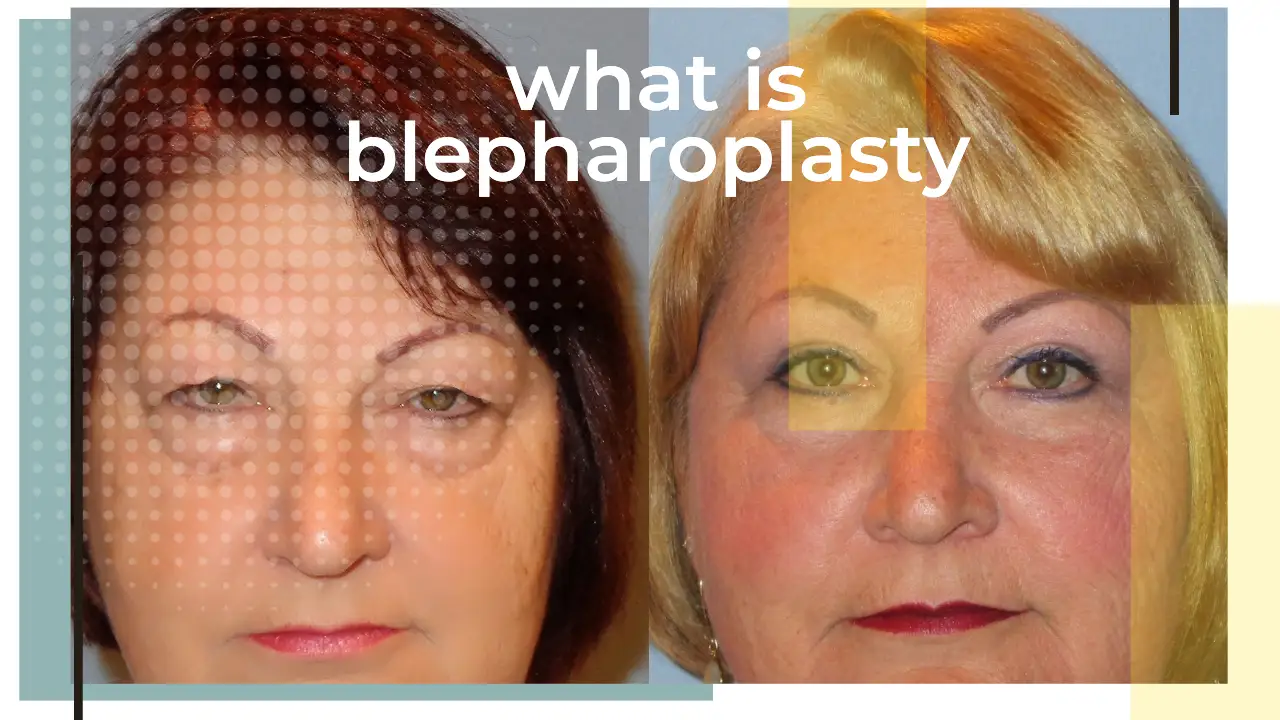
what is blepharoplasty
What is the Difference Between Ptosis and Blepharoplasty?
Blepharoplasty and ptosis repair are both surgeries designed to improve the upper eyelids, but the similarities between the two procedures generally end there. The chief difference between upper eyelid surgery and ptosis repair is that blepharoplasty addresses cosmetic concerns, while the latter procedure treats a medical issue. Ptosis is a condition in which the levator muscles — which allow you to lift your upper lids — stretch or weaken, making it difficult to fully open your eyes. In severe cases, this can restrict the scope of your vision. Some patients find they need to raise their eyebrows or tilt their chins to see properly, causing symptoms like eye strain and headaches.
While ptosis is often genetic, the condition frequently develops as a natural part of aging. If you have trouble fully opening your eyes, ptosis repair may be necessary to tighten the levator muscles and help you regain full function. Eyelid surgery, on the other hand, is designed to treat issues that are more cosmetic in nature. Drooping, and excess skin puffiness in the upper or lower lids are common concerns that can make you look older than you feel.
Ptosis and Blepharoplasty |
|
| Ptosis is the drooping of the upper eyelid. | Blepharoplasty is a surgical procedure used for the treatment of deformities of the eyelids. |
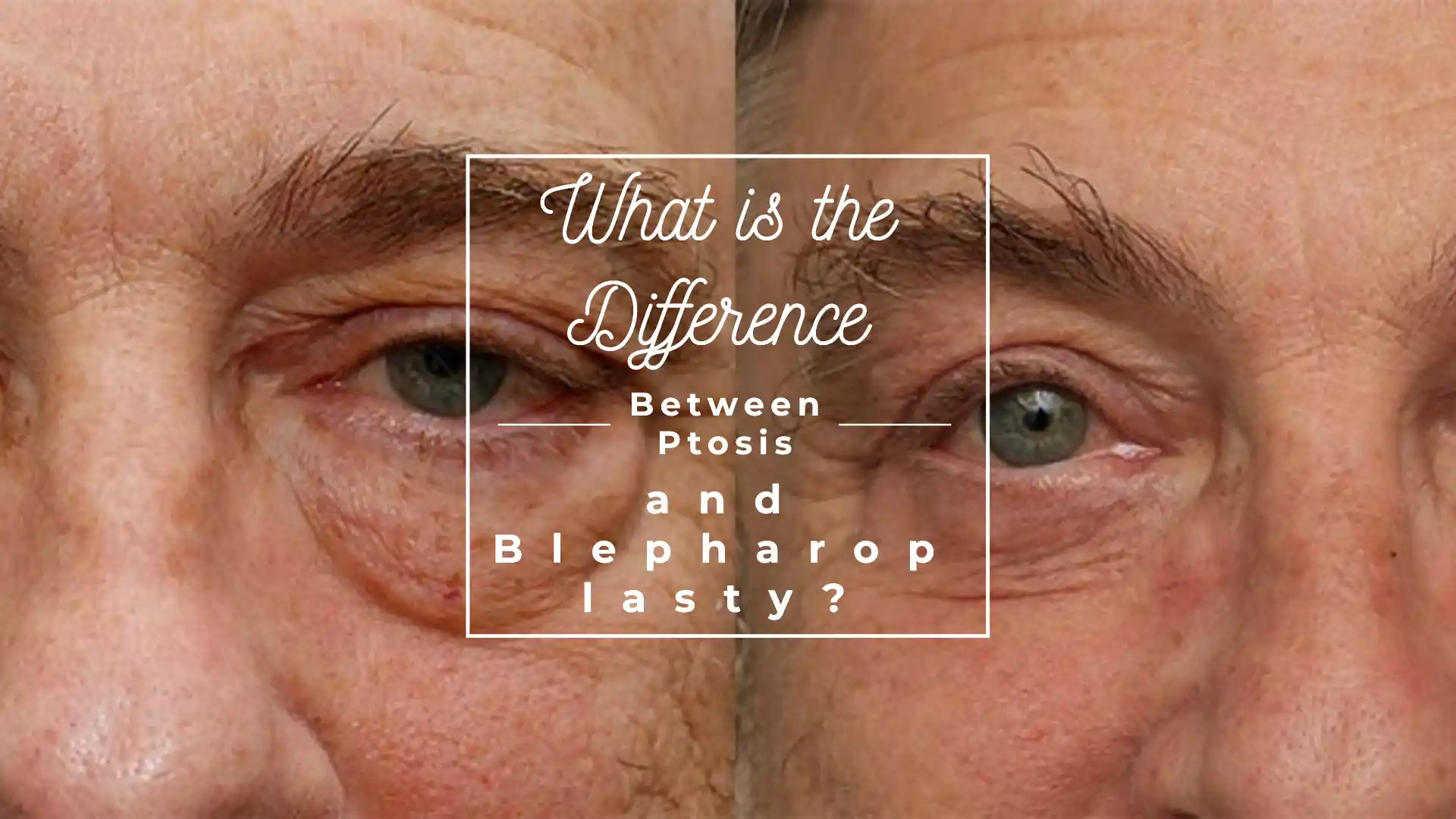
What is the Difference Between Ptosis and Blepharoplasty?
The Telltale Signs and Symptoms of Ptosis: What You Need to Know
Ptosis or droopy eyelids can be a very concerning issue, especially if it causes the eyes to feel strained or the vision to be impaired. It is important to be aware of the signs and symptoms of ptosis so that if you experience any of them, you can seek medical attention. Generally, the signs and symptoms of ptosis are an asymmetry between the two eyelids, with one lid being much lower than the other, and a feeling of heaviness over the eyelids, which may be more prominent when you are tired or trying to look up. Additionally, you may experience some pain in the area around the eyelids, along with headaches or tiredness from the strain.
• Drooping of the upper eyelid
• Difficulty in opening the eyelid
• Discomfort in the eyelids
• Blurring of vision due to the drooping eyelid covering the pupil
• Difficulty in seeing distant objects
• Headache due to the strain on the eye muscles
• Occasional double vision
• Eyelid getting worse throughout the day due to fatigue of the muscles
• Imbalance in the appearance of the eyes due to the drooping of one eyelid
• Difficulty closing the eye completely if severe.
Eye-Catching Symptoms of Ptosis: How to Know When to Seek Help
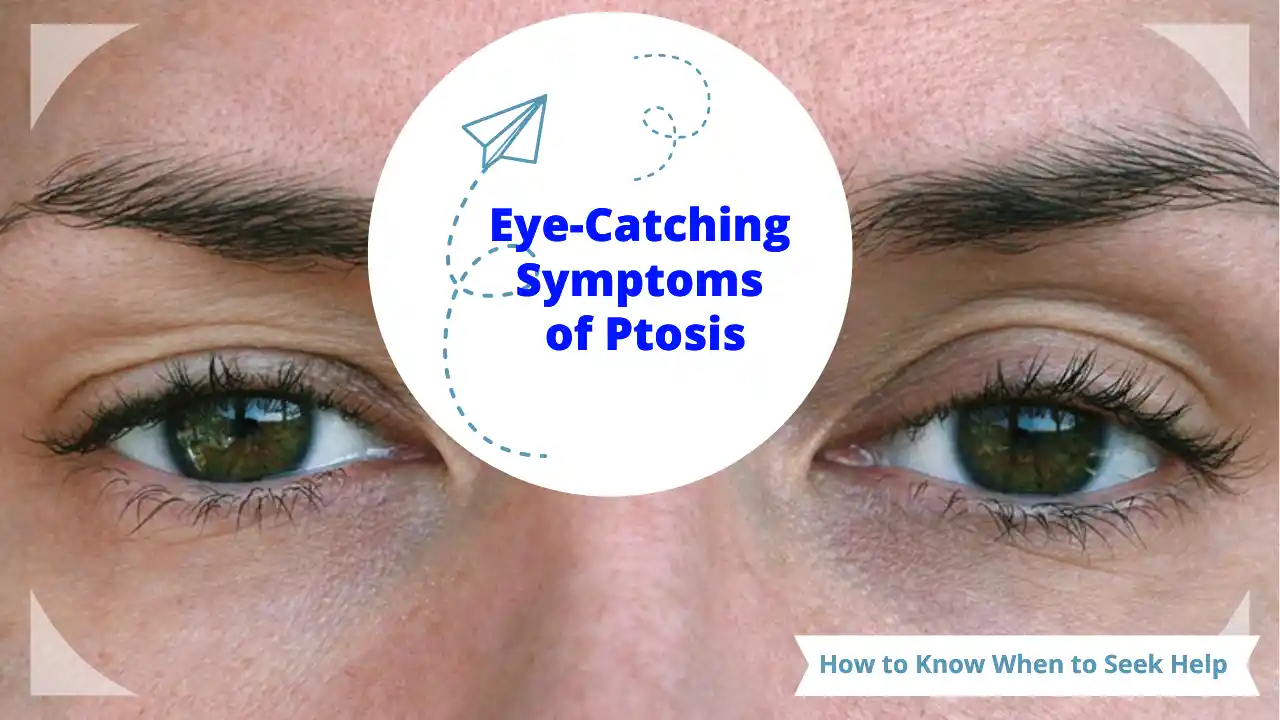
Symptoms of Ptosis
Drooping Eyelids: Could It Be Ptosis?
Do you ever feel like your eyelids are heavy or that you’re constantly straining to see? It’s possible that you could be experiencing ptosis, a condition where one or both eyelids droop lower than they should. Ptosis can range from mild to severe, and it can be caused by a variety of factors, including genetics, aging, or an underlying medical condition. If you’re experiencing any of the symptoms of ptosis, it’s important to talk to an eye doctor to get a proper diagnosis and treatment plan. With the right care, you can manage your symptoms and keep your eyes healthy and happy. Don’t let ptosis bring you down – take action and get the help you need!
A Comprehensive Guide to Treating Ptosis: From Surgery to Eye Exercises
Ptosis, also known as droopy eyelids, is a condition in which the upper eyelid droops down, obscuring the upper portion of the eye. It can be a cosmetic issue or can result in a loss of vision. Fortunately, there are several ptosis treatment methods available that can help restore the natural shape of the eyelid and improve vision.
One of the most common ptosis treatment methods is surgical correction, which involves shortening the tendon that attaches to the upper eyelid and pulling the eyelid back up. This procedure is usually recommended for severe cases of ptosis, and is typically performed by an oculoplastic surgeon.
The levator resection procedure is another ptosis treatment method, which is often used for less severe cases. During this procedure, the surgeon removes a small strip of muscle from the eyelid, which helps to lift the eyelid back into its natural position.
Botox injections are also an option for ptosis treatment. This procedure involves injecting a small amount of botulinum toxin into the muscles that control the upper eyelid. This can help to reduce the droopiness of the eyelid but is usually only recommended for mild cases of ptosis.
Finally, ptosis treatment methods can include the use of special glasses or contact lenses. These lenses are designed to help the eye focus, which can help to reduce the appearance of ptosis.
Ptosis treatment methods can help to restore the natural shape of the eyelid, reduce the appearance of droopiness, and improve vision. Surgery is the most commonly used method, but other methods such as botox injections and special glasses or contact lenses can also be used to treat ptosis. Whatever type of ptosis treatment method is chosen, it is important to work with an experienced oculoplastic surgeon to ensure the best possible outcome.
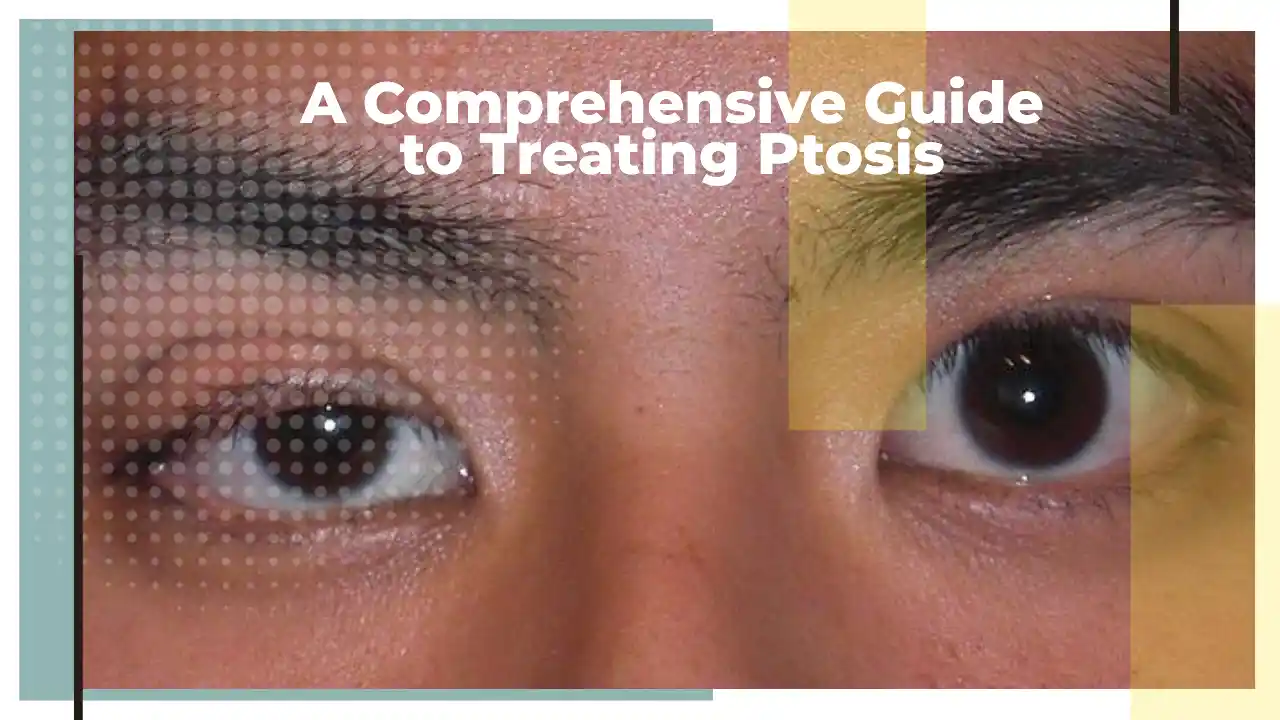
A Comprehensive Guide to Treating Ptosis
Can ptosis be treated with blepharoplasty?
Blepharoplasty is a form of cosmetic surgery that involves the removal of excess skin and fat from the upper and lower eyelids. Ptosis, on the other hand, is a condition in which the upper eyelid droops and obscures vision. Although both blepharoplasty and ptosis involve the eyelids, they are two completely different entities and cannot be treated with the same technique.
Blepharoplasty is a surgical procedure that is used to reduce the amount of excess skin or fat on the eyelids, thereby creating a more rejuvenated and youthful appearance. On the other hand, ptosis is a medical condition that can affect the ability to see clearly due to the drooping of the upper eyelid. Although both blepharoplasty and ptosis involve the eyelids, they are two different entities and cannot be treated with the same technique.
Ptosis is usually caused by an underlying medical condition, such as a neurological disorder, or it can be present at birth. It is most often treated with a surgical procedure called levator resection, in which the levator muscle is shortened. Blepharoplasty, however, is a purely cosmetic procedure, and ptosis cannot be treated with this technique.
The most common way to treat ptosis is with a surgical procedure called levator resection, in which the levator muscle is shortened. This procedure can be used to help improve the appearance of the eyelids and to help improve vision. Blepharoplasty, however, cannot be used to treat ptosis. While blepharoplasty is a great way to reduce the signs of aging and enhance the appearance of the eyes, it cannot be used to treat ptosis.
In conclusion, Blepharoplasty is a cosmetic procedure that is used to reduce the signs of aging and enhance the appearance of the eyes, while ptosis is a medical condition that can affect the ability to see clearly due to the drooping of the upper eyelid. Ptosis is usually treated with a surgical procedure called levator resection, So blepharoplasty cannot be used to treat ptosis. And ptosis cannot be treated with blepharoplasty.
Blepharoplasty and ptosis are two common procedures that involve the eyelids

Can ptosis be treated with blepharoplasty?
How is ptosis surgery performed?
Ptosis Surgery helps to restore the anatomy by correcting a drooping eyelid. The commonest operation for age-related ptosis is to tighten the tendon or muscle that lifts the eyelid.
Less commonly, a strip of tissue from the thigh (called the “fascia lata”) or a silicone band is used to lift the eyelid. The cut can be hidden within the inside of the eyelid, resulting in a scar-less, minimally-invasive operation – otherwise, the cut can be made within the skin fold, thus hiding the scar.
Depending upon the cause of ptosis, surgery can range from a simple 30-minute procedure to a more complicated 90-minute procedure. Recovery times are generally quick, with most patients achieving complete recovery within 14 days.
In adults, most Ptosis Surgery is performed under local anesthesia with or without sedation. All Ptosis Surgery in children is performed under general anesthesia.
What are the risks and complications of ptosis surgery?
Answers to frequently asked questions about ptosis and its treatment methods
Can ptosis be treated with blepharoplasty?
Blepharoplasty is a type of surgical procedure that is sometimes used to treat ptosis. However, the specific type of blepharoplasty used for ptosis is different than the one typically used for cosmetic purposes. The procedure for ptosis is called “ptosis repair,” and it involves tightening the levator muscle or attaching the eyelid to other muscles that can lift it. This can help to raise the affected eyelid to a more normal position and improve the patient’s vision and overall appearance.
At what age does ptosis occur more often?
Ptosis is more common in older adults, typically over the age of 40.
What is the best way to treat ptosis?
The best way to treat ptosis depends on the cause and severity of the condition. Treatment may include:
– Eyeglasses or contact lenses
– Eye exercises
– Surgery to tighten the muscles or implants to support the eyelid
– Botulinum toxin (Botox) injections
– Eye drops or ointments
– Wearing a special eyelid tape or weight to hold the eyelid in position
can blepharoplasty cause ptosis?
• Yes, blepharoplasty can cause ptosis, which is a drooping or sagging of the eyelids.
• Blepharoplasty involves cutting and removing excess skin and fat around the eyelids, and if the skin is removed too aggressively, the eyelids can be weakened and cause ptosis.
• In some cases, ptosis can be corrected with ptosis repair surgery, which involves tightening and re-supporting the eyelid muscles.
• Common signs of ptosis after blepharoplasty include an asymmetry between the two eyelids, uneven folds of skin around the eyelids, and eyelid drooping.
benefits of ptosis Repair
• Improved vision by lifting eyelids to the correct anatomical position
• Reduced wrinkles and other signs of aging around the eyes
• Improved facial aesthetics
• Reduced risk of eye irritation, infections, and other eye problems
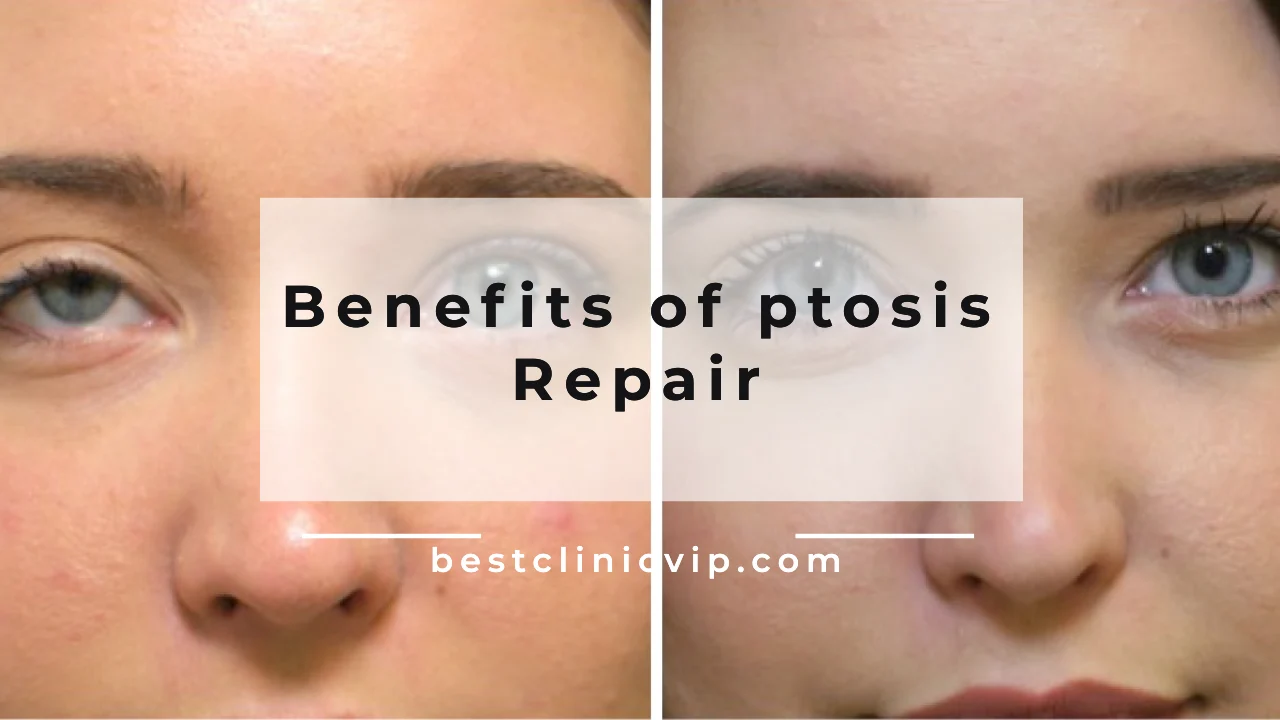
benefits of ptosis Repair
conclusion
Blepharoplasty is a surgical procedure to improve the appearance of the eyelids. It involves removing excess fat, skin, and muscle from the upper and lower eyelids. Ptosis Repair, on the other hand, is a procedure to improve the appearance and function of the eyelids by correcting a droopy upper eyelid.
When considering blepharoplasty vs ptosis Repair, it is important to understand the differences between the two procedures. Blepharoplasty is primarily for aesthetic purposes, while ptosis Repair is intended to improve the function of the eyelid. Blepharoplasty can also be used to reduce puffiness and dark circles under the eyes, as well as to improve the appearance of wrinkles and sagging skin around the eyes. Ptosis Repair, however, is used to correct the drooping of the upper eyelid, which can cause vision problems and can be uncomfortable.
The most common types of blepharoplasty include bilateral, one-sided, and pedicled procedures. Bilateral blepharoplasty involves performing the procedure on both sides of the eyelids at once. This can be done using a single incision or a two-incision procedure, typically performed a few weeks apart.
If you have done this method, write us your opinion about this method in the comments





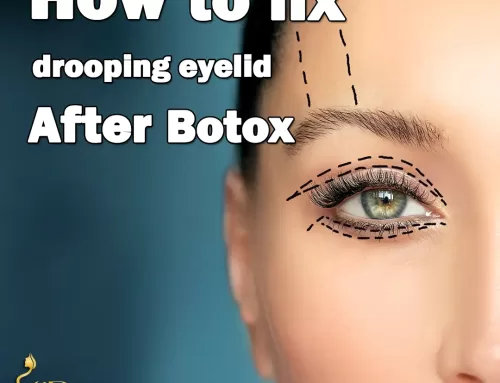

Leave A Comment